Rain gardens are a great way to protect the water quality of Lake Champlain.
A rain garden is a depressed vegetated area that captures rain water runoff from nearby impervious surfaces such as roads, sidewalks, driveways, and roofs. Rain water flows into the garden where it can then slowly soak through the ground, allowing the filtering of pollutants, absorption of nutrients, and breakdown of pesticides by microorganisms.
Properly installed and maintained rain gardens have numerous benefits, including:
- Decreasing sediment runoff into lakes, steams, and wetlands;
- Reducing shoreline damage by slowing rushing waters;
- Protecting groundwater resources;
- Reducing flooding caused by storm drain overflows;
- Providing wildlife habitat; and
- Enhancing the beauty of the built environment.

Are you ready to start planting a rain garden in your yard? View our How to Build a Rain Garden brochure for tips and instructions.
Additional Resources:
Rain Garden Manual for VT and the Lake Champlain Basin (includes recommended plants)
Author: Lake Champlain Sea Grant and The University of Vermont Extension
Published: May 2021
Download the Manual
US Environmental Protection Agency (EPA) Rain Garden Website
Author: US EPA
Visit the Website
VT Dept. of Environmental Conservation (DEC) Lake Wise Rain Garden Fact Sheet
Author: VT DEC
Download the Fact Sheet

